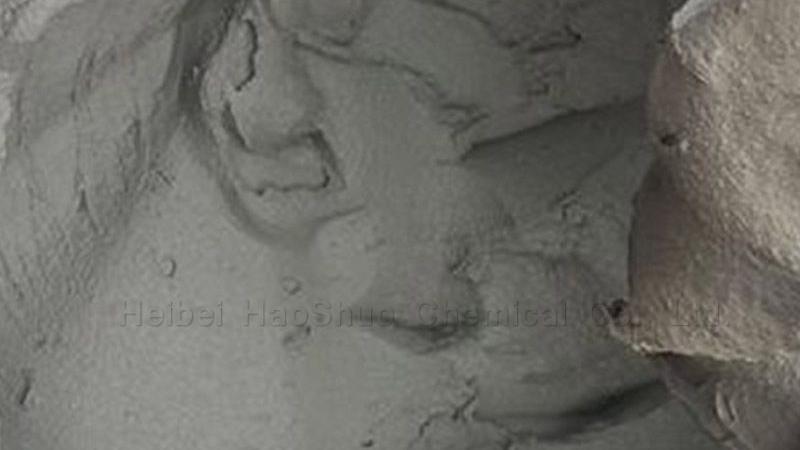Hydroxypropyl Methyl Cellulose (HPMC) is now proved to be a versatile material providing great functionality and tremendous contribution to contemporary construction. Therefore, as the construction grows towards environmentally suitable and efficient solutions, HPMC becomes an additive that captures the spirit of the present sustainable inventions. By perfecting the drymix mortars, practicing resources recycling, and generally reducing the impact of construction activities on the environment, HPMC is laying down the green building framework.
Why Sustainable Construction Matters
The construction industry is, in fact, among the major offenders of dioxide emissions and material waste, so it requires a sustainable solution. Traditional construction methods and tools are expensive, use substandard and inefficient materials, and exert high energy utilization. Therefore, HPMC in dry mix mortars as well as other innovations, are what the world looks to alleviate problems of environmental degradation. Humble cellulose-based additives that can be used by construction companies to reduce the amounts of waste generated as well as to make constructions more environmentally friendly.
HPMC’s Role in Enhancing Sustainability
As discussed earlier, HPMC serves to develop sustainable construction practices in a number of ways, such as enhancing the efficiency of drymix mortars. Mortars containing HPMC require less water during the application, which leads to direct saving of an important commodity. In addition, HPMC improves the water retention features essential for appropriate Cementitious material hydration and curing, resulting in stronger and sturdier structures. This saves time and reduces work frequency, hence lowering material usage over the long run, meaning a reduction in waste.
A fourth sustainable competitive benefit of HPMC is the use of low-carbon resources in construction. The fundamental differences of HPMC are improving the workability and consistency of dry mix mortars reduce application time and material loss. For example, while using plasters and renders containing HPMC, the shrinkage and cracking that leads to waste in ordinary mortar are delineated. All these combined outcomes translate into fewer resources being used, hence reducing the impacts of the environment on individual projects.
Eco-Friendly Composition of HPMC
HPMC is synthesized from cellulose, which is a natural polymer that is harvested from renewable resources such as cotton or wood pulp. Its origin makes it biodegradable and relatively harmless to the environment, more so than synthetic polymers. Moreover, the process of preparing HPMC tends to follow environmental management practices that reduce the effects on the environment in the production process. The proposed cellulose-based additive is a renewable material, and its application corresponds to the increasing interest of the construction industry in cyclic system usage.
Applications of HPMC in Sustainable Construction
HPMC has gained importance as it can enhance the effectiveness of construction products and their performance under numerous environmental and structural conditions while making them environment friendly. In sustainable construction practices, HPMC stands out for its ability to enhance material performance while reducing waste and environmental impact:
Some of the potential effects of HPMC use include enhancement of mortar stability by slowing down the fluidity of the mix and thereby reducing the chances of segregation; enhancing the distribution of the various ingredients in the mortar hence affording better quality end-product. This minimizes the chances of reapplication or repairs due to inequalities in the mixture application on the building surface.
Its function in water retention reduces the potential of cracking and stresses and contributes to curing, which is useful for materials best used in high-stress areas such as walls or floors exposed to the external environment.
We found that HPMCs enhance some aspects of resource efficiency, as materials such as textured plasters can cover larger areas with little material.
As for the improvement of the property of insulating mortars, HPMC’s ability to improve mortar consistency and adhesion, as well as the thermal efficiency and durability of insulating mortars, leads to improving the energy efficiency of buildings.
The presented applications demonstrate how HPMC is being used for the improvement of the sustainability of construction and building practices that are focused on the sustainability goals of building projects.
HPMC’s Role in Low-Emission Building Practices
One of the thorny issues in sustainable construction is the control of VOCs and emissions during the process of applying building materials. These results indicate that HPMC is fully compatible with low VOC content, especially in water-born products as drymix mortars. As a key component for preparing high-performance mortars without solvent-based materials, it contributes to enhancing indoor air quality and meeting the original environmental legislation.
Likewise, since HPMC can improve material efficiency, the amount of energy necessary to produce and transport the products is low. For example, due to water retention, less energy is used in the processes of curing and reworking, hence suppressing the emissions of carbon in the process of project development.
Choosing High-Quality HPMC for Green Construction
To achieve these benefits of sustainable sourcing for HPMC, getting the right supplier is inevitable. The HPMC for dry mix mortar is formulated to provide high quality in line with the latest construction needs but is also environmentally friendly. These products are produced in a very precise way to meet specific standards prevailing in the functional industry today regarding stability in usage and biodegradability in the environment and thus can be used for green-building projects.
Conclusion
Hydroxypropyl methylcellulose (HPMC) is an exciting material for the preparation of green and sustainable construction products. From enhancing water-finding and construction compatibility to decreasing cement content, thereby saving materials and emissions, HPMC greatly helps green construction. It is mostly made of cellulose, which makes it eco-friendly, biodegradable, and renewable – exactly what an industry focused on change is already seeking. When using high-quality HPMC for drymix mortar, builders, and contractors will provide better results while promoting the concept of sustainability. For more details on HPMC and its uses, please visit HPMC for drymix mortar.


